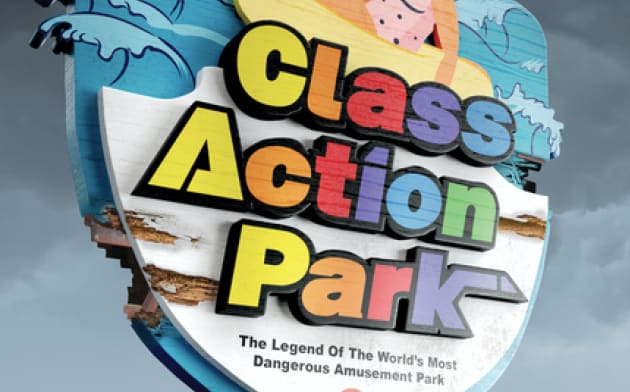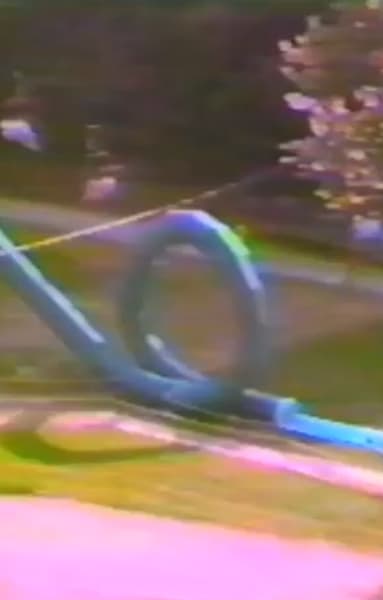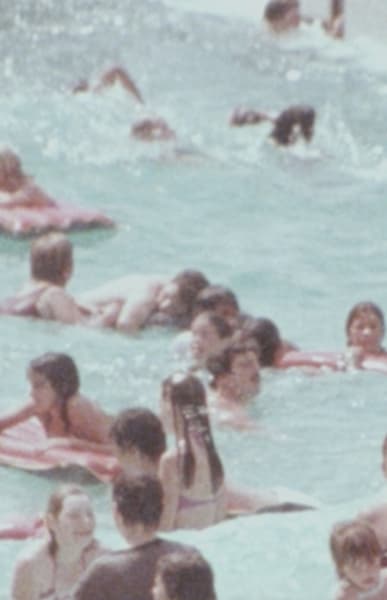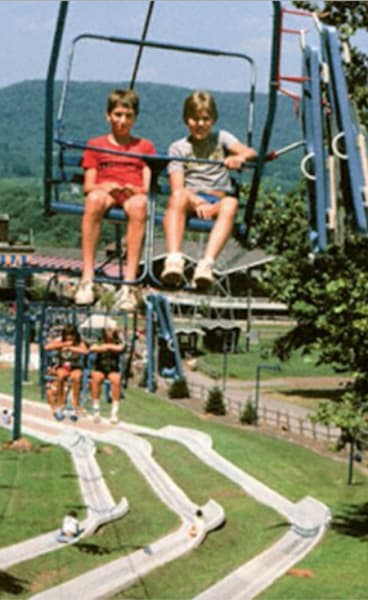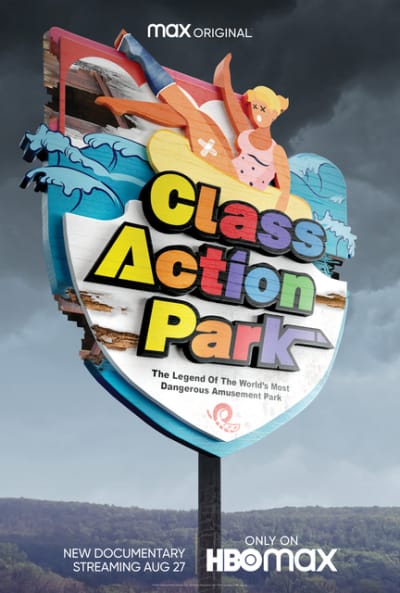Class Action Park is a documentary showcasing the notorious New Jersey water park that operated from 1978 to 1996.
It is part nostalgia, part docudrama, and part horror movie.
I visited Action Park not once, not twice, but many, many times in the 1980s and early 1990s. The rides were wild, and we had a heck of a good time.
But now, as I look back, I realize how lucky we were to have survived it.
That’s part of what makes Class Action Park so alluring; it shows all the things visitors remember punctuated by what happened behind the scenes that even a frequent visitor would have never known.
And if you’ve never visited, Class Action Park is a unique glimpse into New Jersey in the 1980s, a time when regulations were frowned upon, risks were taken for both money and bragging rights, and when it all went wrong, the overall attitude was ‘sh*t happens.’
The film breaks down into three parts: the rides, the staff, and the tragedies.
The first ride showcased is Cannonball Loop. It’s an enclosed tube that flips the rider through an upside-down loop using nothing more than sheer momentum.
I don’t think I ever rode the Cannonball Loop because it seemed to be closed every time we visited.
Now I know why.
The film confirms that rides were designed by people with no background in engineering and no thought for safety.
Staff members, all teenagers, were coerced into testing them by the owner, Gene Mulvihill, who offered $100 bills to anyone brave or stupid enough to be his guinea pig.
Teeth were lost, bones were broken, and blood was spilled.
But visitors, like myself, went back again and again. As the footage shows, the crowds were large because Action Park lived up to its name.
The staff was mostly teens, many as young as 14, who played the roles of lifeguards, ride attendants, and even security. They were in charge of enforcing the so-called rules — when they weren’t getting drunk or high or having sex in equipment shacks.
Any parent watching Class Action Park with their children should be aware that the staff repeats the graphic language that was frequently used as taunts at the park and share memories of sexual exploits.
As adults, former staff members look back on Action Park with a completely different perspective. Their memories are interspersed with the feeling of, yeah, that really happened, and, I can’t believe we did that!
The water that proliferated the rides was ice cold, fed by mountain springs. The point of the rides was to go bigger, higher, and faster, and the adrenaline rush was almost addictive. Unfortunately, supervision was minimal.
Given all of that, it’s no surprise that people got hurt.
The injuries were so rampant that the park had to hire private ambulances because the town couldn’t keep up with the calls. That should have been a sign, but no one seemed to care.
As the film rolls, the more minor injuries are recalled with an almost ghoulish glee. If riders tore large swaths of skin off of their legs and arms when they flipped out of the Alpine Slide and hit the concrete, staff members sprayed them with an anti-bacterial spray until they screamed.
But the real horror comes not only when you learn about the deaths but how owner, Gene Mulvihill handled them.
Multiple people drowned in the Wave Pool. Someone else drowned on the Roaring Springs rapids ride. A rider was electrocuted on the Kayak Simulator.
A young man died after being thrown from the Alpine Slide and slamming his head against rocks that the park had been told to remove.
Gene Mulvihill frequently turned the blame on the victims. He fought every case in court, and if he lost, he refused to pay until the Marshalls were sent to collect.
Gene scoffed at the cost of liability insurance, so he created a fraudulent insurance company, even going so far as to launder money through it.
How the state of New Jersey and the small town of Vernon reacted to all of it is disturbing, until you remind yourself that most people are willing to look the other way as long as there’s something in it for them.
Action Park closed in 1996 but remains an infamous part of New Jersey’s history. For those of us who were there, it’s filled with memories of good times and the realization of how lucky we were to have them without the consequence of serious injury.
But even if you never experienced Action Park, you should watch Class Action Park. Almost anyone who grew up in the 1980s frequented amusement parks in the hope of a simulated near-death experience. They just never expected that somewhere, at Action Park, people were getting a lot more than they bargained for.
Class Action Park captures New Jersey during the 1980s in a way few things do. After watching, you will re-evaluate every amusement and water park you have ever visited, promising caution for future visits for you or your kids.
You can watch Class Action Park on HBO Max.
And if you watched it, or have visited or heard of Action Park, hit that BIG, BLUE, SHOW COMMENTS button down below and share your thoughts.
C. Orlando is a TV Fanatic Staff Writer. Follow her on Twitter.
